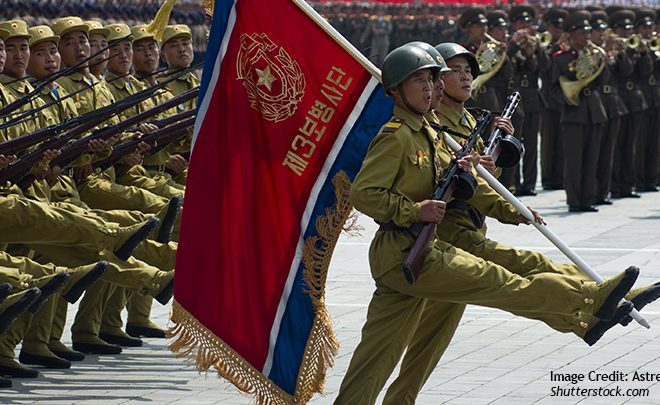North Korean Troops in Ukraine: The Big Picture

In October 2024, reports emerged from Ukraine and South Korea suggesting that North Korean combat troops had been deployed in significant numbers to the Ukraine-Russian front. As of this writing, the North Korean military, or Korean People’s Army (KPA), has integrated troops into the Russian army. This development is alarming but, in one sense, a logical evolution from the DPRK’s initial supply of ammunition and missiles to Russia, culminating in a Russia-Democratic People’s Republic of Korea (DPRK) mutual friendship agreement. This agreement stipulates mutual military support in the event of an attack.
Kim’s Private Army
The KPA was established in 1948 but traces its lineage to 1932, when Koreans fought against the Japanese in China and Russia. The KPA received formal training and military equipment from the Soviet Union during its occupation of northern Korea in 1945. By 1950, the KPA had sufficient capacity to launch an invasion of South Korea with tanks and combat aircraft, coming close to victory. With the UN counter attack, and a brilliant amphibious landing that almost defeated the North Koreans it seemed the KPA was finished until the last-minute intervention of Chinese “volunteers” averted its defeat.
The KPA serves as an arm of the North Korean Communist Party and operates as a de facto private army of the Kim family. With approximately 1 million active personnel and 7 million in reserve, nearly the entire nation of 25 million people functions as a militarized state. Mandatory military service requires males to serve 7–8 years and females 5 years, with additional time often spent in construction units. This system enables the DPRK to maintain a massive military force while simultaneously completing large-scale infrastructure projects.
KPA soldiers typically become proficient after three years of service, during which time some are recruited as non-commissioned or career officers—an “honor” few refuse without severe consequences. Daily indoctrination of 2–4 hours ensures ideological loyalty, instilling anti-American and anti-South Korean sentiment. The DPRK also has a history of deploying troops abroad, including during the Vietnam War and the 1973 Yom Kippur War, using these opportunities to acquire advanced weaponry and technology for reverse engineering. While unable to feed its own population without external aid, the DPRK sustains a military doctrine of Bae-Hab-Jun (배합전/配合戰, “Mix and Match Warfare”), blending conventional and guerrilla tactics with little regard for casualties, including civilians.
KPA in Ukraine
The deployment of North Korean soldiers in Ukraine provides Russia with a more disciplined and motivated force than its recent recruits. For North Korean soldiers, this deployment is both a chance to improve their social standing and a path to becoming “heroes” of the republic, though the brutal realities of war may temper their initial enthusiasm.
How the North Korean soldiers perform is still a question to many. There will be good fighters and weak fighters for sure. These “raw soldiers” are new to war especially in Ukraine but they know hardship and they were handpicked. Among all the reinforcements that Putin has available, these North Koreans are the best trained and best motivated. The ones that survive the war will be better soldiers.
Despite this, the North Korean leadership is taking a risk as to how North Korean society will respond to eventual casualties from this war. Although there is a possibility that this could be destabilizing to the North Korean leadership, it is hard to believe that they are not prepared for this eventuality.
This development has broad implications, highlighting the DPRK as not merely a regional threat but a destabilizing force on a global scale. The DPRK’s history of arms exports and its possession of nuclear weapons exacerbate the risks of proliferation and international instability.
Looking Ahead
The deployment of North Korean troops to Ukraine represents a troubling convergence of two states with little regard for international norms. This partnership strengthens Russia’s capacity in Ukraine while extending North Korea’s influence and reach beyond Northeast Asia. The international community must recognize this as a significant escalation requiring coordinated responses.
We must increase diplomatic pressure including pushing for stronger sanctions targeting DPRK troop deployments and any further military cooperation with Russia and encourage closer collaboration between South Korea, the United States, NATO, and other allies to counter DPRK-Russian ties. Additionally, we must strengthen intelligence efforts to track North Korean troop movements, equipment, and their battlefield impact in Ukraine. We must also exploit the cultural and logistical divides between Russian and North Korean forces to undermine their cooperation.
The free world should enhance military readiness and cooperation, particularly through joint exercises and missile defense capabilities, to deter DPRK provocations and engage China diplomatically to discourage its tacit support of DPRK actions, leveraging their interest in regional stability. Also, it is imperative to disrupt illicit trade networks that sustain the DPRK’s military programs, particularly its arms exports and penalize financial institutions or entities facilitating North Korea’s global operations. Finally, prioritize efforts to block the DPRK’s ability to export advanced tactics, technology, or nuclear materials to other destabilizing actors.
By addressing this challenge with a combination of strategic pressure and strengthened alliances, the global community can mitigate the immediate threat while undermining the foundations of this emerging partnership.